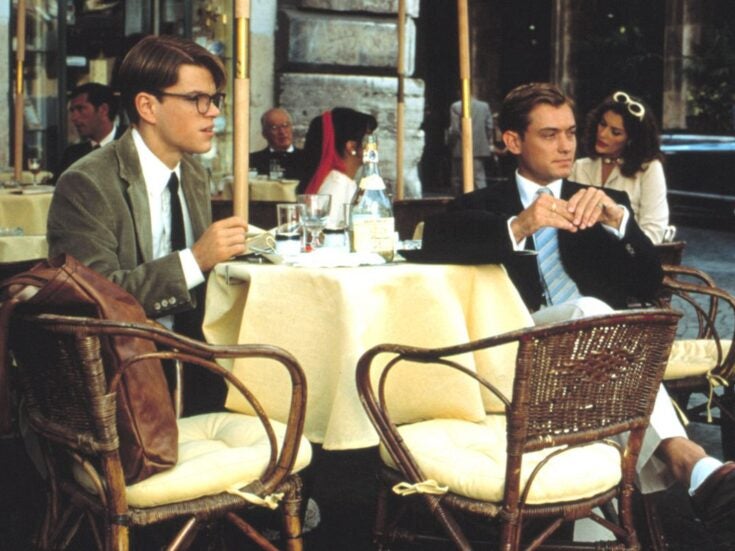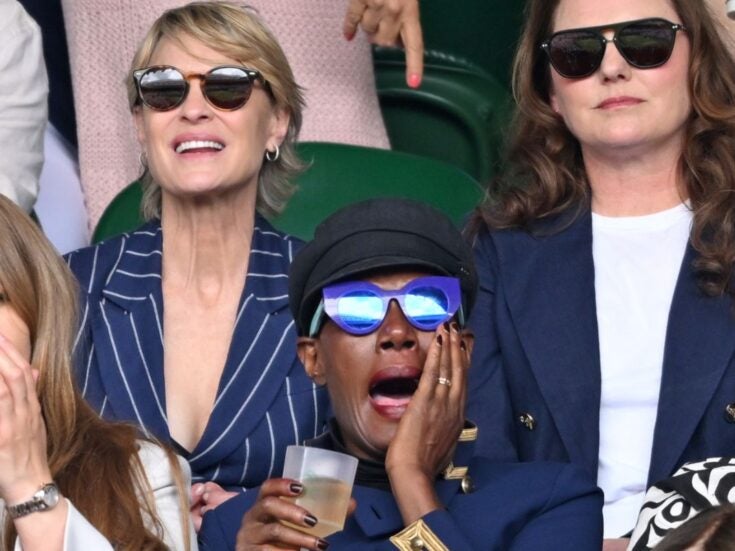From Morocco’s literary scene, to Karl Lagerfeld’s car collection and Nick Candy’s penthouse, Spear’s columnist travels far and wide in search of the juciest news and gossip
Sour Candy
When fashion blogger Charlie Porter was invited to a party at Nick Candy and Holly Valance’s One Hyde Park penthouse, then took photos and published them on his blog, he must have known he was going to create a stir.
The photos went viral and much hilarity was had at the monogrammed towels and gold sink in the black marble bathroom and plastic topiary on the terrace, but Candy had the last laugh: Porter took down first the pictures and then the whole article.
While this might seem like suppression of a harmless if embarrassing prank, an overreaction by Nick Candy, one top privacy lawyer has told Hedgehog that it was inevitable as the Candys’ privacy had been invaded.

The lawyer, who has acted for celebrities and HNWs, said: ‘It’s quite right too. It’s a private party — you invite people into your private residence, but you don’t give them permission to publish photos of what they find.’
According to the law, as seen in the Naomi Campbell case when she was photographed coming out of a Narcotics Anonymous meeting, if you have an expectation of privacy — whether it’s leaving an NA session or walking down the street, let alone at a party in your own house — publishing photos will be an invasion.
But what about if a non-celebrity goes to a non-celebrity friend’s party and posts pictures on Facebook — is that an invasion? ‘It possibly is.’ However, if they’re not famous, they’re less likely to mind. ‘No-one’s going to be interested in my party. But because it’s Nick Candy and a fashion blogger…’
It seems that the more interesting the party, the less right you have to publish photos of it. How unfair!
The lawyer adds that bloggers and others on the internet don’t always realise that the law applies to them because they are operating in what feels like an unconstrained medium. As the writs going out to anyone who implied on Twitter that Lord McAlpine was a paedophile suggest, however, the internet is very much within the law’s grasp.
PS: Perhaps it will be Porter who’ll be laughing longest: he replaced the blog with a video of Holly Valance singing ‘Kiss Kiss’, her only hit single.
It Ain’t What You Give
Philanthropy has too often tended to the airy-fairy: aspirations and promises lead not infrequently to self-satisfaction but not action. The excuses are easy: it’s too hard to get involved. I don’t believe the charity will use my money well. How can you tell if you’re getting results?
Caroline Fiennes feels this is feeble, and that’s why she’s written It Ain’t What You Give, It’s The Way That You Give It: Making charitable donations which get results. A slap around the charitable chops, Fiennes dispels the fog around philanthropy which can prevent faint-hearted would-be donors from getting involved. This is not a philosophical vagation but a practical handbook.
Take picking your charity. People often worry that a charity which has high administration costs doesn’t use your donations effectively, but Fiennes in her no-nonsense style reports a study which showed that ‘…drum roll… the high-performing charities spend more of their budgets on admin than do the lower-performers.’
When you want to find out which charity is the best (‘you’re not just looking for charities that do some good’), she has a checklist of six questions about goals and progress. These sound like obvious concepts to evaluate but they can be submerged in an emotional appeal.
In her section on major gifts, Fiennes, who runs philanthropic consultancy Giving Evidence, is unsparing about the mistakes people make: ‘Be hard to find, and unresponsive to enquiries; make charities apply to you, and have a complicated and bespoke application process; attract far more applications than you need; make small grants, and lots of fuss.’ These have all happened — and continue to happen.
It Ain’t What You Give… is exactly the guide that donors need. The refreshingly rigorous approach Fiennes brings to the science and art of philanthropy is long overdue.

giving-evidence.com
Illustration by George Leigh
Karl Lagerfeld in Black and White
Karl Lagerfeld is always late, and he made no exception for the launch of his latest photography exhibition, A Different View, images of his Rolls-Royces on display at Goodwood.
The delay had its desired effect — the crowd fell silent as Lagerfeld made his entrance: hair shock-white, collar four inches high and perfectly starched, eyes unreadable behind dark glasses and in front of hundreds of raised iPhone cameras.
The Rolls-Royce is ‘the most beautiful car in the world’ and ‘the top of British style and luxury’, he told me. I asked what he thought of British style more generally, but the man who last year said Adele was too fat was on his very nicest behaviour, and wouldn’t be dragged in.
Fashion-lovers should feel thankful that Lagerfeld now admires his cars from behind his camera rather than behind the wheel. ‘I had two terrible accidents,’ he said in his unmistakeable Germanic staccato, pausing for dramatic effect before deadpanning for the benefit of the Rolls-Royce owners in attendance: ‘It was in a Jag and a Mercedes. I fell asleep twice. I was not a good driver.’
Lagerfeld chose to photograph this latest exhibition in black and white because ‘I love black and white. Look at me, I’m black and white!’
‘Today, very often many photographers will try again and again [to get the perfect shot] and I’m very much against it. I like the idea that the image is controlled, and not improvised,’ he said. It’s clearly a principle the designer applies to his own image, too.

Cutting Edge
The last time Hedgehog went to Gieves & Hawkes, it was mid-renovation and the staff ought to have been selling bespoke boiler suits to cope with all the dust. This time, no such dust, only chairman Mark Henderson looking across the racks of suits from the restored gallery above where Dr Livingston was laid out when the building used to be the Royal Geographic Society’s headquarters.
‘Our forms of dress,’ he says, ‘come from what people wore at court and in the military.’ Suits, jackets, coats, the shiniest of shoes all derive from James Gieves’ naval tailoring and Thomas Hawkes’ military outfits, some of which are arrayed around the gallery; Nelson, indeed, died at Trafalgar in a Gieves uniform.
History without present is no use, of course, and Gieves have seen the benefit of 2012’s then-and-now matrix, the Diamond Jubilee and the Olympics pointing out what is oldest and newest about Britain. Such modern tradition — or classic newness — is one explanation for Gieves becoming big in China, with a hundred stores suiting the new super-wealthy.
If the Chinese luxury market is worth three times what Europe’s is, as Henderson says, it makes sense to be at their cutting edge. Bespoke suits are still made in London, however, so the renminbi billionaire comes to town.
Down in the pattern-cutting room, where outlines of the rich and well-dressed hang on racks, Lee, the head cutter, tells Hedgehog that even with London’s new stream of UHNWs, the days when someone would come in and order twenty suits in a go are gone: ‘You’d give them the swatches and they’d pick out a couple of colours and say, “Those are the ones I don’t want.”’
But with 24 people working on the bespoke side, the snip-snip-snip of cold steel scissors shows no signs of being silenced under Savile Row.
Whitewash
Hedgehog was playing a game on Twitter recently of unlikely marriages. Robbie and Shirley Williams. George W and Kate Bush. Katie and Sherlock Holmes. Not long before then I had found perhaps an equally unlikely pairing, only this was real: the Whitechapel Gallery and Mayfair.
More particularly, the slick young denizens of Mayfair’s financial houses and their flighty friends who attended the launch of First Futures at Brown’s.
First Futures is a programme to engage (potential) young collectors with the work the Whitechapel Gallery and its artists do: exhibition tours, studio visits, museum shows, meetings with private collectors.
It’s priced punchily — £500 a year — but as co-chair Edouard Benveniste-Schuler, specialist in Post-War & Contemporary Art at Christie’s, told me, ‘We’re much cheaper than other programmes in London.’ (Tate’s Young Patron scheme is £1,000 a year.)
They sold twenty memberships, so the price clearly isn’t a problem. The problem, I would argue, is that Whitechapel are targeting the wrong people, based on those I met.
One gentleman — sharp suit, dark pompadour hair, no clue — asked me: ‘So, what is this Whitechapel thing?’ This attitude — East London? Why on earth would I go there? — seemed to predominate, with few of the non-art-world people knowing much about the gallery or Contemporary art or East London.
You could argue that’s exactly why you need a programme to educate people, but it was stony ground. Artist Haroon Mirza was there, and the children of collectors, but no-one you could exactly qualify as the lifeblood of the art scene.
It was a particularly bad sign when one committee member I talked to couldn’t name a single Contemporary artist and then confessed to preferring Old Masters.
Whitechapel is a terrifically significant, successful, acclaimed and indeed glamorous gallery — its annual ball is a major social occasion and raises piles of money, with lots donated by important artists to its charity auction — and it needs to secure young collectors. First step: dispel their oblivion.

Going for Gold
‘Black is the colour of the masses: when you stop black, you start your own identity.’ So speaks one of the assistants at OTTO at 66 Grosvenor Street. OTTO does not do black at all: this season’s colours are light and dark blue, grey, beige, brown, all very fitting for the international businessmen who needs to look Mayfair-stylish.
Tony Giallonardo, who founded OTTO after a successful career in exclusive menswear stores in Canada, tells Hedgehog about one businessman who flew in from LA, came straight to the duplex store at 10pm and left at 2am after dinner and champagne. That, Tony says, is the OTTO difference: if a client needs to shop out of hours, OTTO is aperto.
Having said that, you can’t just walk in. The website welcomes you with the legend ‘By appointment only’, which is not a warning but an enticement.
Not only does OTTO not do black, it doesn’t do anything you are likely to find elsewhere in the world. Tony sources craftspeople from all across Italy, each of whom makes their products — whether a sky-blue sport jacket or monk-strap shoes — by hand, then picks the entire range himself. Shoes are even coloured by hand. On Hedgehog’s first visit, the paper-thin cashmere polo necks particularly appealed.
Of course, a gentleman often needs more than clothes. Gym? Check. Steam room? Check. Garden terrace to enjoy an espresso or (speak it quietly) a cigar from the house humidor? Checkmate.

ottouomo.com
More-Akech
Morocco — compared to its neighbours anyway — is lucky. Unlike Tunisia, Libya and Egypt, it has not recently undergone a convulsive political transition, rather King Mohamed VI still reigns and the few protests in 2011 were peaceful and even resulted in a degree of accommodation by the king.
Thus, Morocco has been concentrating on winning back some of the tourists who fell away in fear at the Arab Spring by promoting its cultural life.
And rich it is too. As well as Vanessa Branson’s Arts in Marrakech International Biennale — which has drawn everyone from Shezad Dawood and Julian Schnabel to Alan Yentob and Kim Cattrall — there is the La Mamounia Literary Award, which brought Hedgehog to the warm haze of glamorous Marrakech.
The award, which celebrates excellence in Francophone literature in Morocco, is now in its third year and is judged by eight litterateurs from Morocco, Senegal, Belgium, Canada and France. The chair was novelist and songwriter Christine Orban. (Can you imagine if Ian McEwan started writing rock ballads?)
The jury struggled, we learnt, because of the diversity of the texts, which is in itself a positive sign for local literature. The prize was eventually awarded to Mohamed Nedali for his novel Triste Jeunesse, which documents the struggle of the young and unemployed in Morocco through the eyes of his student protagonist, fighting against corruption, class and disappointment.
It narrowly beat Aicha Benamour Benis’s more linguistically impressive Lettre de Fes to the 200,000 dirham (£15,000) prize.
The British contingent at the award was perhaps as interested in how French women, specifically Christine Orban, manage to look chic wherever they are. Not a literary musing, admittedly, but an eternal conundrum nonetheless.
Read past issues of Hedgehog
Don’t miss out on the best of Spear’s articles – sign up to the Spear’s weekly newsletter
[related_companies]





